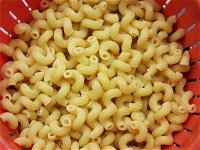
Chef's Ingredients - Pastas Trivia Quiz
Pasta-making has been an art for centuries, and these twelve pastas are evidence of that. Sate your appetite with this pasta photo match quiz. (Click the photos to get a closer look!)
by trident.
Estimated time: 3 mins.











